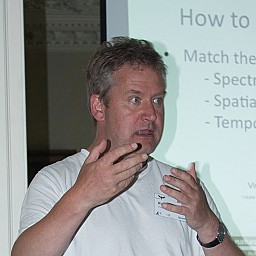 Dr Roland Baddeley
Dr Roland Baddeley

Research
The real world is fundamentally noisy and uncertain. Dealing with this uncertainty is one of the most diffuclt things animals do. Over the last 200 years Bayesian techniques have been developed to deal with such uncertainty, and the development of computers has great expanded what problems can be approached.
I am interested in applying such techniques to understanding human and animal cognition. As long as reasonably large data sets can be gathered, insight can be gained into most problems, but at the moment I am interested in visual development, eposodic and semantic memory (and forgetting), eye movements, and signalling in animals.
Biography
My first degree was in Artificial Intelligence and Computer Science from Sussex, and after various computer related jobs in the industry, I did a PhD with Roger Watt at Stirling University on statistical models of early vision. After post-docs in Cambridge Physiology department (with Horace Barlow), and Oxford Psychology and Physiology, I got a lectureship in Experimental Psychology at the University of Sussex. I moved at the end of 2003 to Bristol.